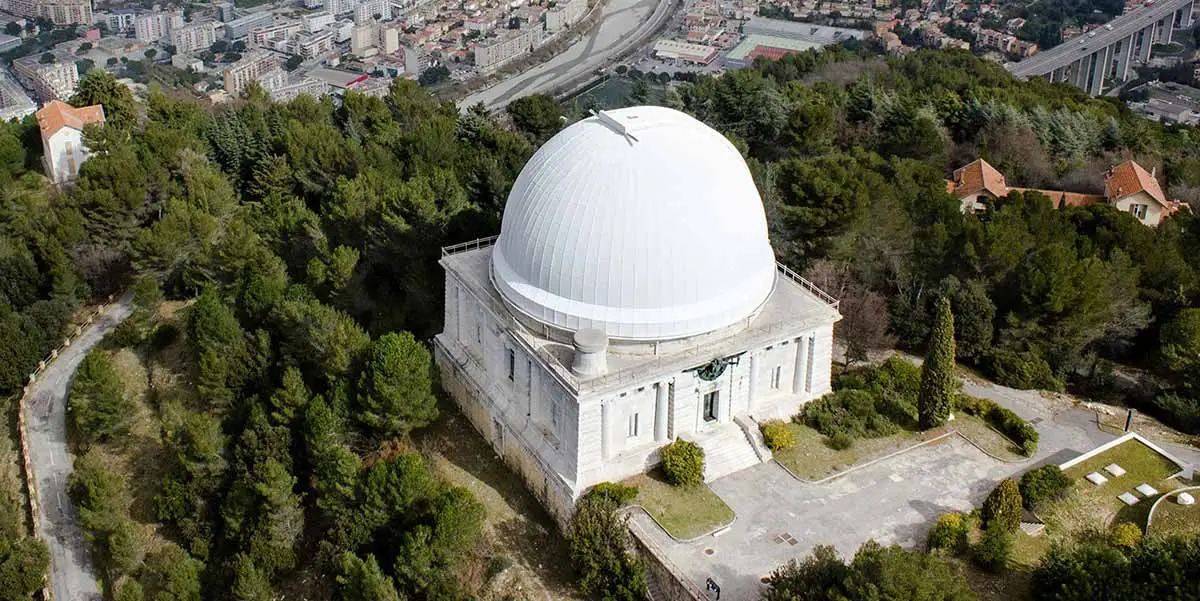Nice Observatory by Gustave Eiffel in Nice (France)
Building name: Nice Observatory
Architect: Gustave Eiffel
City: Nice
( France)
France)
The Nice Observatory's dome, designed by Gustave Eiffel, is a remarkable example of both architectural and engineering prowess. Here are some details about this iconic structure:
Design and Construction
Gustave Eiffel, renowned for the Eiffel Tower in Paris, was also responsible for the design and construction of the dome of the Nice Observatory. Completed in 1886, the dome was part of the larger observatory complex designed by the architect Charles Garnier.
Innovative Structure
The dome of the Nice Observatory is notable for its innovative design and engineering. Eiffel employed his expertise in metalwork to create a large, hemispherical dome that housed the observatory's telescope. The dome was constructed using a framework of iron ribs, which were then covered with a skin of copper.
Copper Cladding
The exterior of the dome is clad in copper, a material chosen for its durability and weather resistance. Over time, the copper has developed a distinctive green patina, adding to the dome's aesthetic appeal. This patina not only protects the underlying metal but also gives the observatory a striking appearance against the backdrop of the French Riviera.
Rotating Mechanism
One of the most impressive features of the Nice Observatory dome is its ability to rotate. The dome sits on a circular track, allowing it to pivot and provide the telescope inside with a full range of views of the night sky. This mobility is crucial for astronomers to observe different celestial objects without having to move the telescope itself.
Functionality and Astronomical Research
The primary purpose of the dome at the Nice Observatory was to house a large refracting telescope, which was used for astronomical research and observations. The dome's design was carefully planned to ensure optimal conditions for stargazing, with features such as adjustable vents for ventilation and minimizing air turbulence.
Contribution to Astronomy
The Nice Observatory, with its Eiffel-designed dome, played a significant role in advancing astronomical research in the late 19th and early 20th centuries. Astronomers used the telescope housed within the dome to study stars, planets, and other celestial phenomena, contributing to our understanding of the universe.
Architectural Beauty
Beyond its functional purpose, the dome of the Nice Observatory is also admired for its architectural beauty. Eiffel's design combined elegance with practicality, creating a structure that is both aesthetically pleasing and technologically advanced. The dome's graceful curves and the contrast of the copper against the blue sky make it a striking sight for visitors and residents alike.
Historical Significance
The Nice Observatory, including the dome designed by Gustave Eiffel, holds historical significance as a center of scientific discovery. It stands as a testament to the ingenuity and vision of both Eiffel and the astronomers who used the observatory for their groundbreaking research.
Preservation and Recognition
The dome of the Nice Observatory has been well-maintained over the years, and efforts have been made to preserve its historical and architectural value. It is recognized as an important landmark in the city of Nice and continues to be a site of scientific exploration and public interest.
Gustave Eiffel's dome at the Nice Observatory is a remarkable blend of engineering innovation, architectural beauty, and historical significance. Its elegant design, rotating mechanism, copper cladding, and contributions to astronomy make it a noteworthy structure in the realm of scientific and architectural achievements. The dome stands as a symbol of human curiosity and the pursuit of knowledge about the cosmos.

